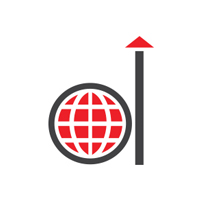UX design is one of the decisive factors for install penetration of an app. A bad design can render a good idea unusable. Apart from usability and stability of an app, the design plays a critical role in determining if the user will retain the app in the system or look for an alternative with better design.
A Wireframe is a series of pictures either hand-sketched or digitally produced to show how the different screens of an app or website look on different devices and the placement of buttons, text, and images. A Flow Diagram shows how the users will progress from one Wireframe screen to the next, i.e. which wireframe screen will appear on the use of a particular UI element. There are multiple Flow Diagrams for an app or a website showing the alternate paths the user takes.
Wireframes and Flow Diagrams are usually created by UX designer or UX architect or an Information architect. Once designed and shared, they form the blueprint for further discussion, collaboration, and concept testing in the early stages.
In a custom application development project, the importance of Wireframes and Flow Diagrams can’t be overlooked since they offer the following functional benefits:
1. Information Link Between the Teams
Flow Diagrams and Wireframes development form the essential information link between the developers and UX designers. Tools for Wireframing and Flow Diagrams like Proto.io, help in testing the user interactions on the app or website and facilitate collaboration.
2. Visualization on Different Screens
Wireframing for cross-device apps that need to be accessed from mobile, tablet, and web helps in visualizing look and feel on screens of different sizes. It is important to maintain consistency of UI elements across devices and flows so that the user experience remains the same. High-performance apps have the same flow, whether it is a smartwatch, a mobile phone or a web app.
3. High Fidelity App Prototyping
With advanced tools like InVision, Axure or Adobe XD, teams can generate Interactive Prototypes instead of static pictures and flowcharts. With tappable elements, these tools offer a next-to-the-real-app feel and let the team validate the idea before putting all resources in action.

Such prototypes can be shared with project managers, business stakeholders, and professional reviewers. For custom application development projects, app prototyping helps in assessing if the design is adaptive and interactions are aligned with the requirements.
4. Superior User Experience
In a saturated app market, where every day tens of new apps are added to the marketplace, User Experience has emerged as the biggest distinctive feature. Flowchart and Wireframe Diagrams help the development team in finding the best way of using an app and thus facilitate building a superior user experience. Both techniques offer developers to simulate how the user will access a function and how his/her screen will look.
5. Minimal and Functional Design
Recently, minimal design has gathered momentum in design of apps and websites. Balancing UI elements with white space and fewer screens to arrive at the desired link, have been the main goals of a minimal design. Flow Diagrams and Wireframing of applications help developers and designers to keep the UI minimal and reduce the number of screens between the entry event and desired result.
Summing Up
Flow Diagrams and Wireframes in app development act as a blueprint of UX, essentially communicating the purpose of each page or button to the developing team and other project stakeholders. They are particularly important when the project scope is vast, release is in planned phases, and the team is distributed.







